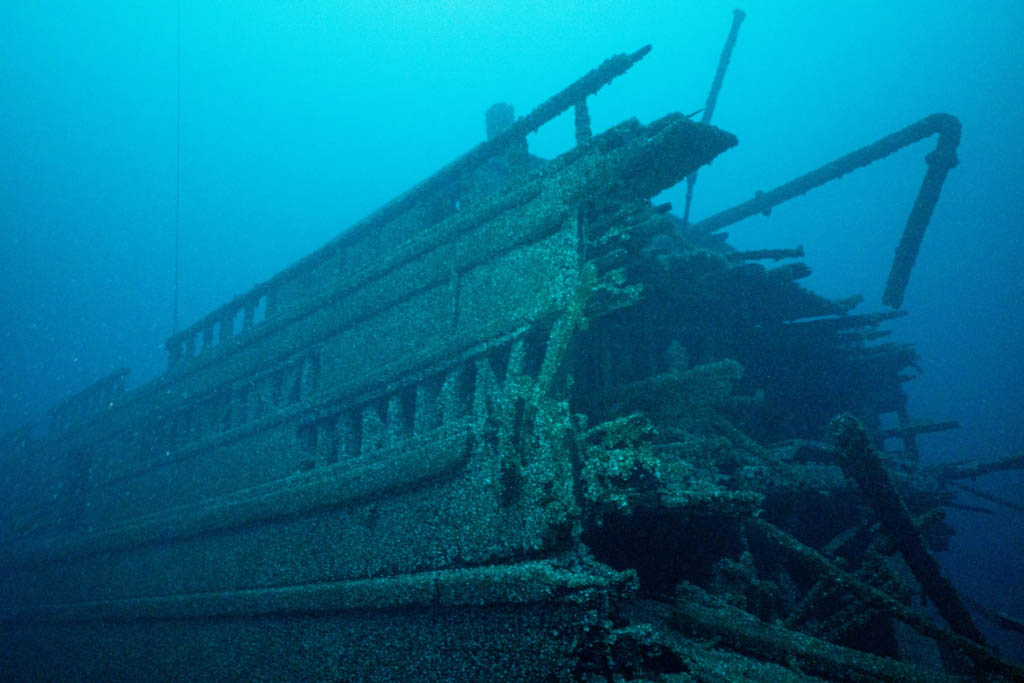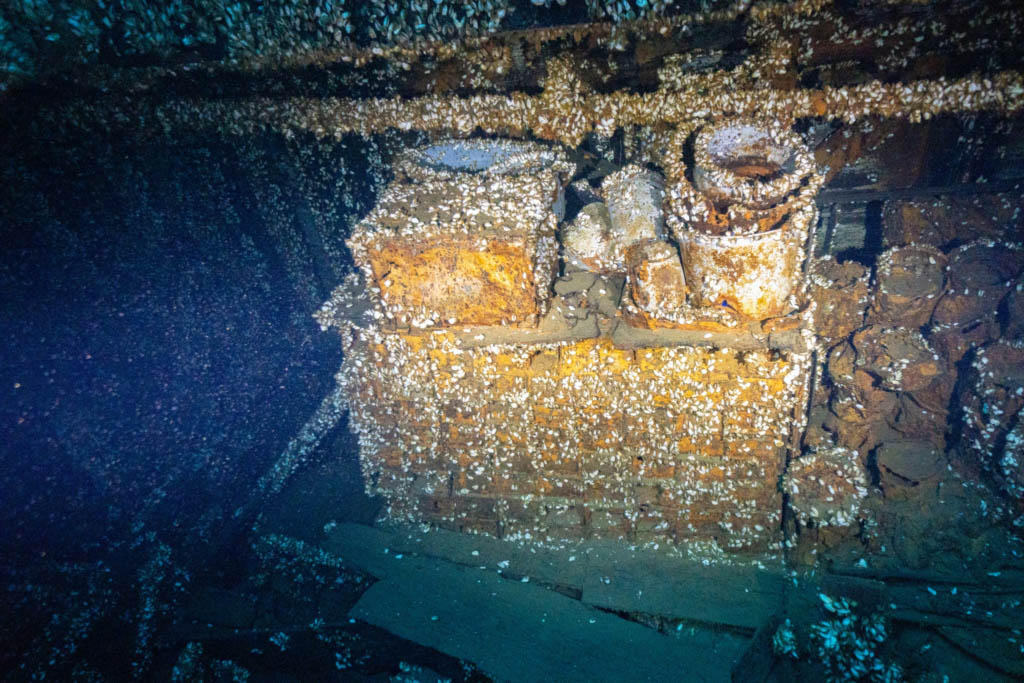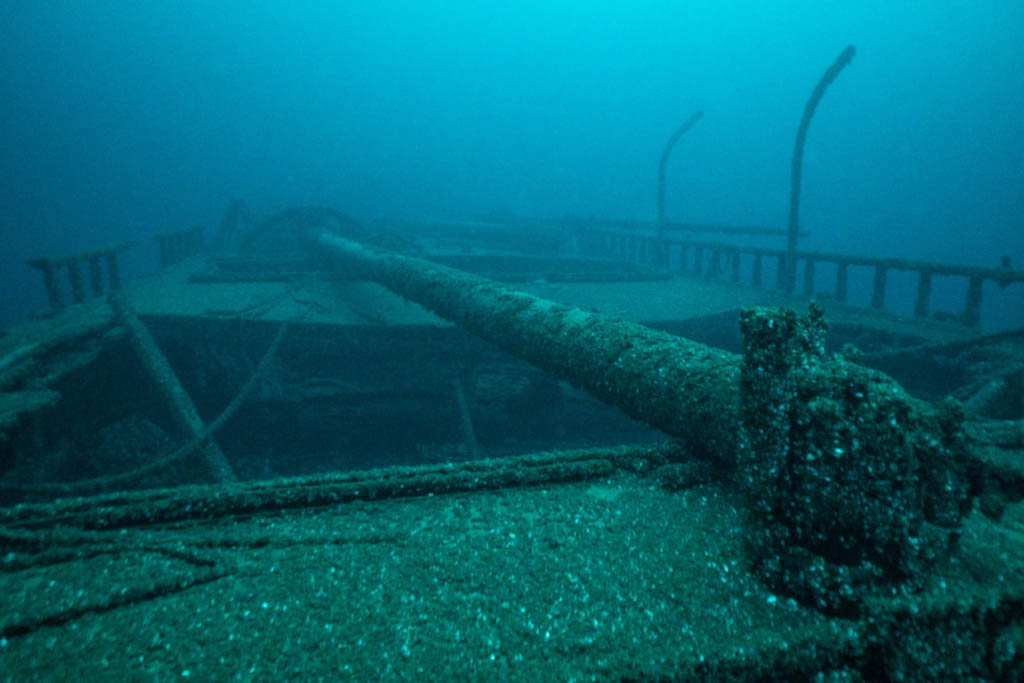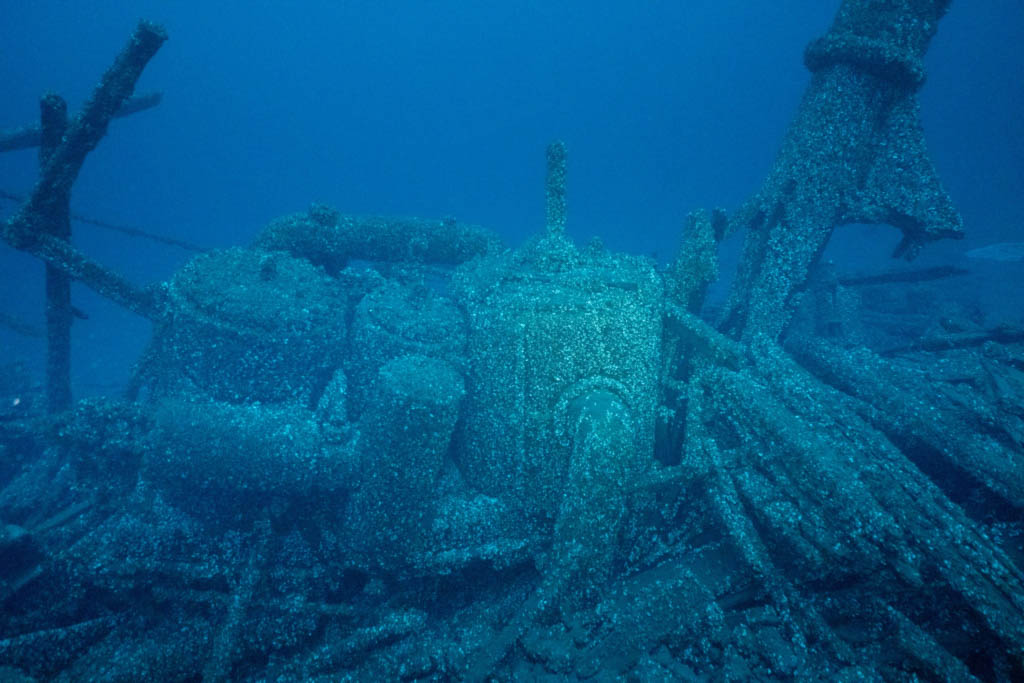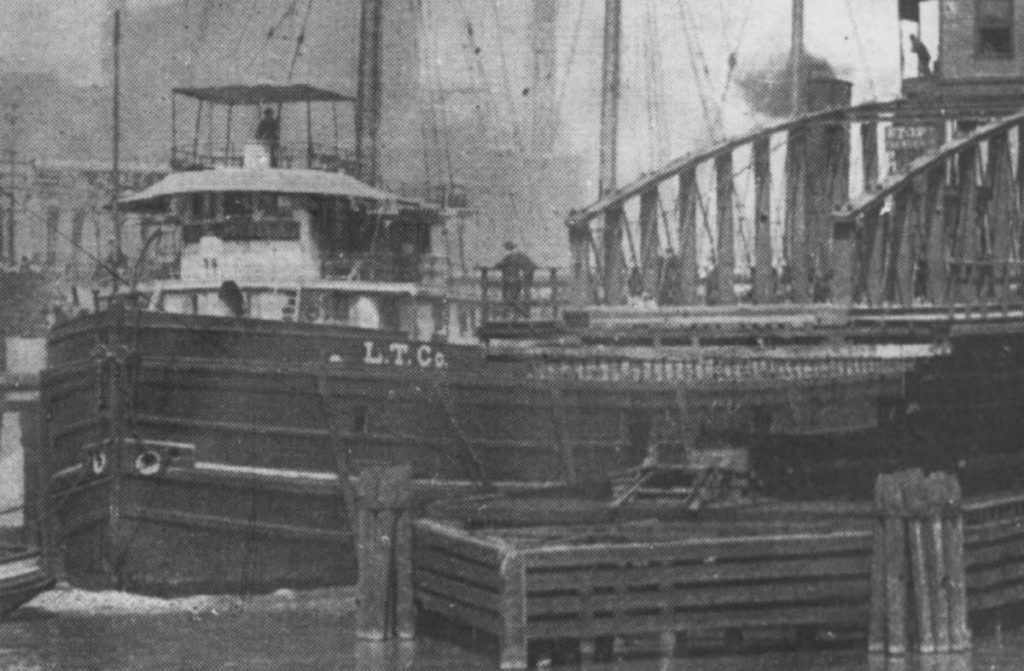
“One of the most spectacular shipwrecks you’ll ever see is the shipwreck of the bulk freighter Florida off Presque Isle, Michigan“
Matt Mandzuik
The SS Florida was a wooden-hulled Great Lakes freighter that served on North America’s Great Lakes from its construction in 1889 until her sinking in May 1897 after colliding with the larger wooden-hulled freighter George W. Roby. Ed Ellison discovered her wreck in 206 feet (63 metres) of water in July 1994, almost completely intact except for her stern.
The SS Florida) was built in 1889 for Peter P. Miller of Buffalo, New York by Robert Mills & Company. The Florida was one of the largest wooden ships ever built, measuring 270.3 feet (82.4 m) long, 40.2 feet (12.3 m) wide, and 15.4 feet (4.7 m) deep. Her gross tonnage was 2103.36 tonnes and her net tonnage was 1834.65 tons. She could carry 2400 tons of cargo. She was propelled by a 650-horsepower triple expansion steam engine with three cylinders measuring 32, 52 and 45 inches in bore and 20 inches in stroke.
Final Journey
The Florida left Chicago, Illinois, in May 1897, with a cargo of flour, barrels of whiskey, syrup, and various manufactured goods. She sailed up Lake Michigan, through the Straits of Mackinac, and into upper Lake Huron. The Florida was rammed by the larger freighter George W. Roby in a dense fog off the coast of Presque Isle, Michigan, on May 20, 1897, around 9:00 a.m. Her entire crew was transferred to the Roby. The escaping air from her hull blew her cabins off during her sinking. Her captain, Captain Henry Murphy, stated that “the ship collapsed like a jackknife when the stern hit bottom in over 200 feet (61 m) of water.”
The SS Florida Today
Sitting in 206 feet of water at off Presque Isle, Michigan, and almost completely intact, the SS Florida is an incredible dive site. Except for her stern, which collapsed when she hit the bottom, the majority of her hull is completely intact. Her broken stern reveals her triple expansion steam engine, which still has its gauge panel intact. Although the forward cabins have been removed, the boiler cabin is still attached to the hull. A wooden deckhouse forward of her boiler cabin could serve as a guest dining room. Her masts are strewn across her deck. Her cargo remains in her hold as well. Her wreckage is near that of the early steel freighter Norman.
Thanks to Matt Mandzuik, Owner of Dan’s Dive Shop for his photo contributions.




